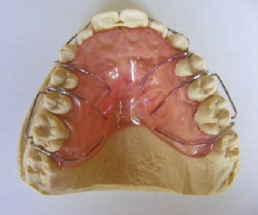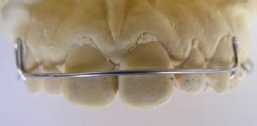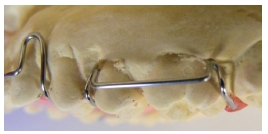Chapter 18
Retention and retainers
Retention comes after the active treatment is completed, when the appliance is removed.
It is a passive stage and an important part of treatment.
It is crucial because it prevents the teeth from relapsing (moving out of their new position) and returning to the original one.
After the end of active treatment and after debanding, the surrounding tissues have yet to consolidate.
Because teeth have been moved away from their original position, new alveolar bone has to form and consolidate, and the gingival fibres have to adapt.
The teeth need many months to ‘firm up’, so it is especially important to faithfully wear retainers in the early stages.
The patient must understand that they need to wear the retainers to maintain good results or else everyone’s hard work and effort will be undone.
What type of retention and for how long it is to be used is prescribed by the clinician and is part of the treatment plan.
If the patient does not comply with the instructions and the teeth move some way out of alignment, going back into fixed appliances again is often the only way of retrieving the situation. However, the patient may have run out of compliance or, in the National Health Service (NHS)-funded service, the Index of Orthodontic Treatment Need (IOTN) for this would now be scored too low to qualify for treatment.
However, there can be other reasons for results to relapse.
- There can be unfavourable growth, often in the mandible
- Teeth do not fully intercuspate or interdigitate (fit together) in occlusion, so that there is scope for them to slip out of position
There are two terms used to describe how the teeth ‘fit’ together.
They are:
- intercuspate
- interdigitate
although intercuspate is the correct and preferred term.
When the teeth are in occlusion, they ‘mesh’, like closing your hands together and putting your fingers between one another (hence, the term interdigitate).
Retainers can be:
- A removable type
- fixed to the teeth
There are no standard criteria set for the length of time you need to wear a retainer.
A longer retention period may be needed depending on the complexity of movement achieved.
For removable retainers, some clinicians say:
- full-time for a year
- then 6 months, nights only
- then discontinue
Others say, full-time for a year, then nights only for 6 months, then reduce the wear down to a couple of nights a week.
Some say that the frequency and time for which retainers are worn can be reduced but never discontinued. It may be only for a couple of nights a week but this is still vital. If for any reason the retainers should suddenly feel tight, then wear them more regularly for a little while until the tightness stops.
This means wearing retainers indefinitely on this occasional basis, may be for life.
It is important to fit the retainers as soon as possible after active treatment has finished and the fixed appliances have been removed.
REMOVABLE RETAINERS
The most common forms are:
- Hawley retainer (Figure 18.1)
- Essix retainers
- occasionally, removable appliances that have been made passive
Figure 18.1 Hawley retainer.

Figure 18.2 Labial bow.

Figure 18.3 Adams crib.

HAWLEY RETAINERS
Consist of:
- an acrylic base plate, which fits around the palatal upper and lingual lower gum margins for stability, and incorporates the metal components
- a labial bow which fits over the front of the anterior teeth (Figure 18.2)
- Adams crib, usually positioned on the first molars for retention of the appliance, i.e. keeping it in place (Figure 18.3)
BEGG RETAINERS
Consist of:
- an acrylic baseplate
- a lab/>
Stay updated, free dental videos. Join our Telegram channel

VIDEdental - Online dental courses


